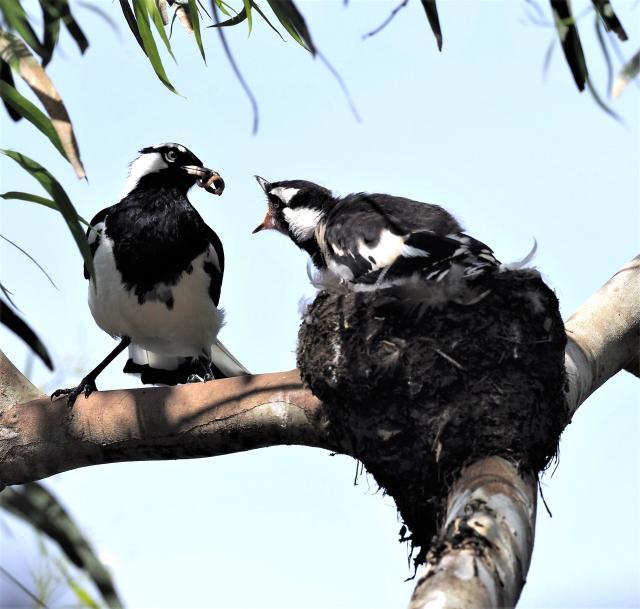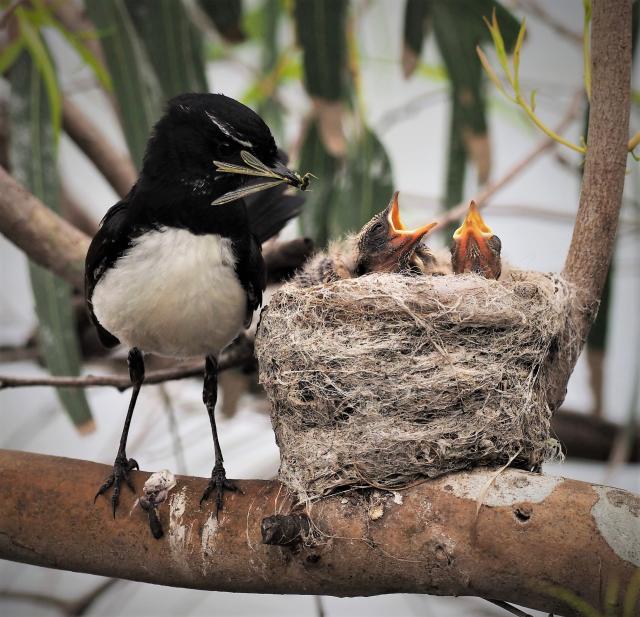On my way back from Melbourne during the week I drove to Avalon Beach to see if there were any waders in the ponds near the beach.
The only migratory wader I saw was one solitary bar-tailed godwit.
On the subject of bar-tailed godwits, recently a juvenile bar-tailed godwit set a record for a nonstop flight by flying from Alaska to Tasmania.
Apparently the five-month-old bird set off from Alaska on 13 October and satellite data revealed that it did not stop during its flight, which took 11 days and one hour, with a distance of 13,560km.
Avalon was very quiet in regard to birds as it was very windy, and the only other birds besides the godwit was a pair of pied oystercatchers.
My boss at work has had a white sparrow in her garden, and I’ve visited a few times in an effort to photograph this bird for her. The sparrow is very wily and shy, and certainly doesn’t want its photo taken and every time I’ve visited the sparrow has hidden deep in the vegetation.
This is a good ploy by the sparrow as it would be a target for a predator like a sparrowhawk if it wasn’t so wary as it does not camouflage well.
Luckily my boss lives near Winchelsea, so I’ve been able to call in to Lake Murdeduke.
The lake is very full as is Lake Modewarre.
I’ve also called in to Lake Colac to check out the nesting great-crested grebes. One of the Colac locals informed me that the water capacity of Lake Colac is at its highest level for over 30 years. He also said that he hasn’t noticed many hatchlings despite the existence of around 10 nests, and he thinks that the weather has been too cold for the birds.
Maybe the nests that were built were deluged by the continuing rains. In the same area of Lake Colac there were Eurasian coot, purple swamphen and dusky moorhen hatchlings swimming around, plus many reed warblers calling.
At Lake Lorne in Drysdale there has been a lot of waterfowl breeding activity. I noticed grey teal, Pacific black duck and chestnut teal ducklings plus a few hoary-headed grebe hatchlings.
The young grebes look very similar to the great crested grebe hatchlings with the stripy juvenile downy feathers.
I received an email from Alan from Ocean Grove. He has been watching a magpie lark nest at Blue Waters Lake and reported that they lost one hatchling but still had one remaining chick going strong, and sitting in the nest, flapping its wings, stretching and ready to take flight after only two or so weeks.
He also noticed a pair of willie wagtails are busily feeding their three hatchlings in the same tree. Alan reported that the variety of insects the wagtails feed their young is amazing, including dragonflies, damselflies, moths, grubs and more.
Alan also noticed that the four cygnets at Blue Waters Lake are now about five months old and now have some independence, for instance the adult swans can be seen at one end of the lake whilst the four cygnets might be at the other end slurping duckweed.
Another nest that Alan has noticed at the lake is a white-faced heron nest. He remarked that the nest is small for such big birds and is a shabbily built platform of sticks.
Alan has been spending a few hours each day at tide change trying to photograph crested terns taking fish out of the Barwon River.
When driving home from the river Alan noticed three yellow-tailed black cockatoos near the service station in Wallington Road, and they landed in an old banksia near the bowls club. Alan also reported that there are four tawny frogmouths, two juveniles and two adults at one of the tees at the golf club.








